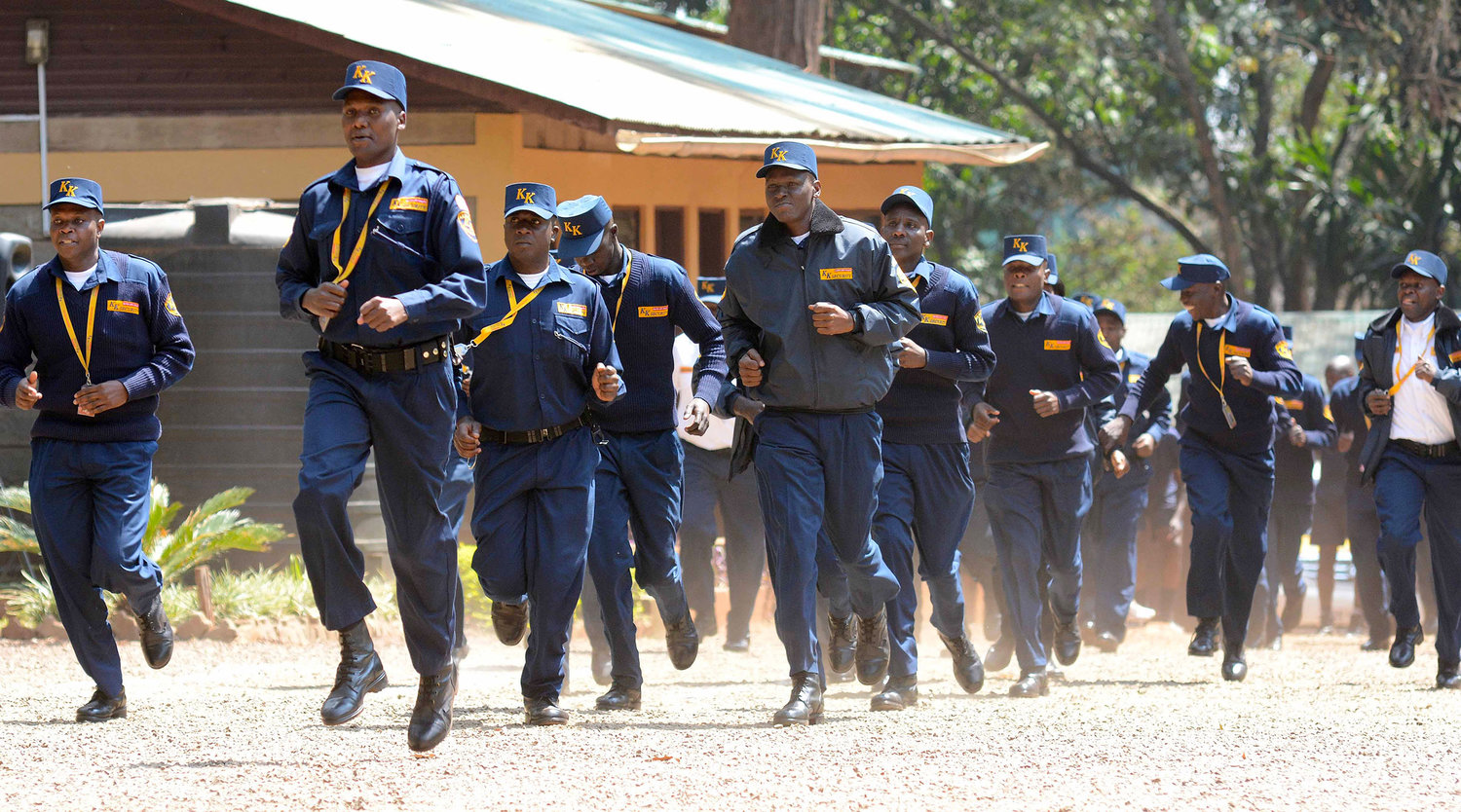From Cybersecurity to Physical Actions: Strengthening Corporate Protection in an Altering Globe
By incorporating the staminas of both cybersecurity and physical security, companies can create a comprehensive defense approach that attends to the varied range of dangers they deal with. In this conversation, we will explore the altering danger landscape, the demand to incorporate cybersecurity and physical safety and security, the execution of multi-factor verification actions, the significance of staff member recognition and training, and the adaptation of safety and security procedures for remote labor forces. By examining these vital locations, we will certainly acquire useful insights into exactly how companies can enhance their company safety and security in an ever-changing world.
Recognizing the Altering Hazard Landscape
The developing nature of the modern-day globe necessitates a comprehensive understanding of the altering danger landscape for reliable company safety and security. In today's digital and interconnected age, threats to company safety and security have become much more complicated and innovative. As technology advances and organizations come to be increasingly dependent on digital infrastructure, the capacity for cyberattacks, information violations, and other safety violations has dramatically raised. It is critical for companies to stay educated and adapt their protection determines to resolve these advancing threats.
One secret element of understanding the transforming threat landscape is recognizing the different kinds of threats that companies encounter. Cybercriminals are constantly developing new methods to make use of vulnerabilities in computer system systems and networks. These dangers can range from malware and ransomware strikes to phishing frauds and social engineering techniques. Furthermore, physical risks such as theft, criminal damage, and company reconnaissance stay prevalent worries for organizations.
Monitoring and assessing the threat landscape is important in order to recognize prospective threats and susceptabilities. This includes staying updated on the most recent cybersecurity trends, assessing hazard intelligence reports, and conducting regular threat analyses. By understanding the transforming threat landscape, organizations can proactively execute proper security steps to minimize risks and shield their assets, credibility, and stakeholders.
Integrating Cybersecurity and Physical Security
Incorporating cybersecurity and physical safety is crucial for comprehensive company protection in today's digital and interconnected landscape. As companies progressively rely upon technology and interconnected systems, the boundaries in between physical and cyber hazards are becoming blurred. To properly secure against these risks, a holistic approach that incorporates both cybersecurity and physical security procedures is essential.
Cybersecurity concentrates on safeguarding digital possessions, such as data, networks, and systems, from unapproved accessibility, interruption, and theft. Physical protection, on the other hand, incorporates actions to protect physical properties, people, and centers from hazards and vulnerabilities. By incorporating these 2 domain names, companies can resolve vulnerabilities and risks from both electronic and physical angles, thus enhancing their overall protection stance.
The integration of these 2 disciplines enables a more thorough understanding of safety and security threats and allows a unified action to occurrences. For instance, physical gain access to controls can be improved by incorporating them with cybersecurity methods, such as two-factor verification or biometric recognition. Cybersecurity procedures can be enhanced by physical security actions, such as security electronic cameras, alarms, and safe accessibility factors.

Applying Multi-Factor Authentication Actions
As organizations progressively focus on extensive protection steps, one reliable technique is the execution of multi-factor authentication procedures. Multi-factor verification (MFA) is a safety method that needs customers to provide multiple kinds of identification to access a system or application. This method includes an added layer of security by integrating something the individual recognizes, such as a password, with something they have, like a safety and security or a finger print token.
By applying MFA, companies can considerably improve their protection pose - corporate security. Typical password-based verification has its limitations, as passwords can be easily endangered or forgotten. MFA mitigates these risks by adding an extra authentication aspect, making it harder for unauthorized people to get to delicate information
There are numerous kinds of multi-factor verification approaches available, consisting of biometric authentication, SMS-based verification codes, and hardware tokens. Organizations need to examine their certain demands and choose the most proper MFA option for their demands.
Nonetheless, the application of MFA need to be carefully intended and executed. It is crucial to strike a balance in between safety and security and usability to avoid user irritation and resistance. Organizations needs to likewise think about potential compatibility concerns and provide ample training and assistance to guarantee a smooth transition.
Enhancing Employee Awareness and Training
To reinforce business security, organizations need to prioritize enhancing staff member understanding and training. In today's rapidly evolving hazard landscape, workers play an essential role in guarding an organization's delicate info and assets. Regrettably, many protection violations happen due to human mistake or lack of understanding. Therefore, organizations require to purchase extensive training programs to enlighten their staff members about possible risks and the ideal methods for minimizing them.
Efficient worker recognition and training programs ought to cover a wide variety of subjects, consisting of information security, phishing attacks, social design, password health, and physical protection actions. These programs need to be tailored to the specific requirements and obligations of different worker duties within the company. Regular training sessions, workshops, and simulations can help employees create the required skills and knowledge web link to identify and react to protection hazards effectively.
In addition, companies ought to encourage a society of safety and security awareness and give recurring updates and pointers to maintain staff members notified about the latest hazards and reduction methods. This can be done via interior communication networks, such as e-newsletters, intranet portals, and email projects. By promoting a security-conscious workforce, companies can dramatically decrease the likelihood of safety events and protect their valuable properties from unapproved gain access to or compromise.

Adapting Safety Steps for Remote Labor Force
Adapting company protection procedures to fit a remote labor force is necessary in making certain the protection of sensitive information and assets (corporate security). With the raising pattern of Check This Out remote work, companies should carry out ideal security procedures to alleviate the threats linked with this brand-new way of working
One vital facet of adapting protection steps for remote work is establishing safe communication networks. Encrypted messaging systems and virtual personal networks (VPNs) can help protect delicate info and stop unapproved accessibility. Additionally, organizations should apply making use of solid passwords and multi-factor verification to improve the safety of remote accessibility.
One more essential consideration is the implementation of secure remote gain access to remedies. This entails supplying employees with secure access to business resources and information with digital desktop computer framework (VDI), remote desktop computer protocols (RDP), or cloud-based solutions. These technologies make sure that sensitive information continues to be secured while enabling workers to do their duties successfully.

Finally, thorough security awareness training is essential for remote employees. Training sessions ought to cover finest methods for firmly accessing and handling sensitive info, determining and reporting phishing efforts, and keeping the general cybersecurity health.
Verdict
In final thought, as the threat landscape continues to advance, it is critical for companies to strengthen their security determines both in the cyber and physical domains. Incorporating cybersecurity and physical safety, executing multi-factor verification procedures, and boosting worker awareness and training are crucial actions towards accomplishing robust company safety and security.
In this conversation, we will check out the altering threat landscape, the requirement to integrate cybersecurity and physical safety, the implementation of multi-factor authentication steps, the relevance of worker recognition and training, and the adaptation of safety steps for remote labor forces. Cybersecurity steps can be enhanced by physical safety and security procedures, such as security cams, alarm systems, and protected accessibility points.
As companies significantly focus on extensive protection measures, one efficient method is the execution of multi-factor authentication procedures.In verdict, as the threat landscape proceeds to develop, it is crucial for organizations to enhance their safety gauges both in the cyber and physical domains. Incorporating cybersecurity and physical security, executing multi-factor authentication procedures, and boosting staff member awareness and training are vital actions in the direction of attaining robust company safety.